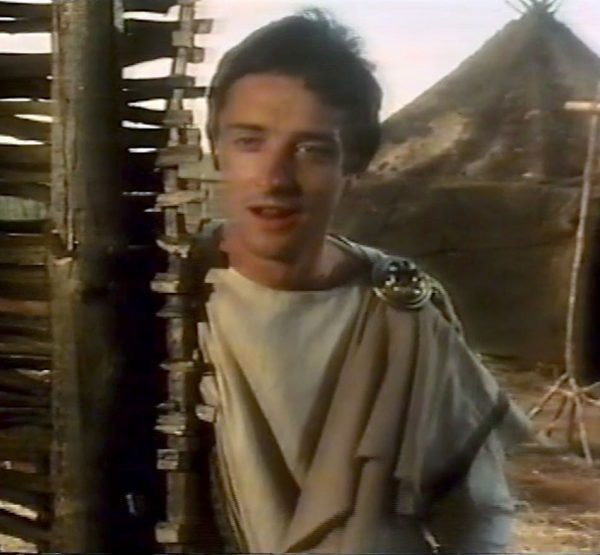History Is Not What It Used To Be
 There is an old joke, nostalgia isn’t what it used to be. But as I blow the dust off old notes to prepare myself for a talk to a Lincolnshire society, I find myself swimming in nostalgia.
There is an old joke, nostalgia isn’t what it used to be. But as I blow the dust off old notes to prepare myself for a talk to a Lincolnshire society, I find myself swimming in nostalgia.
The talk has the title taken from an Eddie Izzard sketch about archaeology, and when it was written it was intended as a light-hearted look at a very important subject, the way we constantly reinterpret and reconstruct the past. But this is 2020 and the few months between writing and delivery have put things in a different light, how we perceive history and the perception of history being rewritten has become a lot more current and more than a little controversial. However that may be, it needs discussing, and I tend to start with my own experiences.
My first foray into reconstructing historical events of note was probably, like most people my age, as one of the animals in the school nativity play. My understanding of the theatrical medium was extremely limited at the time and I don’t remember much about it. The first historical re-enactment that I can remember being a part of was during the Queen’s Silver Jubilee. I was still very young, but with some school friends, I dressed up in a cardboard hat, pulled my long (probably borrowed) socks over my tracksuit trousers, and made a determined effort to blow up the houses of parliament with a pair of Watneys party seven cans covered with yet more cardboard. We failed and were promptly arrested by my brother, which surprises absolutely nobody.
As a re-enactment, it could easily be dismissed as not authentic, but it was amusing, honest and had integrity. Looking back, I feel that a lot of the historical entertainments that broadened my young world also had integrity, even if on close examination they lacked accuracy. Whether it was Robinson Crusoe on Saturday mornings, or heavily dubbed foreign dramas like The Flashing Blade, or The Water Margin of Liang Shan Po, or even the cardboard adventures of Noggin the Nog, I was presented with a vibrant image of the past, full of interesting people doing things that no longer exist in the world around me. I was hooked.
Now, as an adult, I know the limitations of these programs, but when it comes to discussing the way the past looked, I find myself coming back to them. Which is worrying.
It would be very easy to start pointing my finder at newer programs and complaining about the dark vision that they seem to share, but with this, as with many things, there is something I need to do first. I need to turn the finger around and ask myself if it is me that is the problem. Many of our perceptions of the world are set early in life. History is no exception. So the television that we view when we are young will colour our perception of the past. In those days the lighting for the shot was determined by the demands of the camera, and there were no digital filters placed over the top to brighten or darken the scene. Shooting outdoors, or even on a studio set would be done with as much light as possible. The result, the past appeared like one of the long summer holidays of my youth. Now, the use of filters creates a more gritty, dark look. But do we know that one is right and the other wrong?
In truth, it is very hard to say, and it becomes a matter of how we feel about the past and the images of the past we are familiar with. New visions can come as a shock, the rediscovery of old visions can be reassuring. So I have to consider the possibility that when I feel a preference for the familiar images of BBC children’s drama’s to modern blockbusters, I am letting nostalgia colour my vision.
So how can we judge a reconstruction of the past, and they are all around us? Ultimately, it is down to integrity. Are we being true to our forefathers in the way we represent them? If they could see the way they are presented, would they be content?
And perhaps that is my problem with television and film. I see very little that is true to me, so how can it be true to my ancestors.
